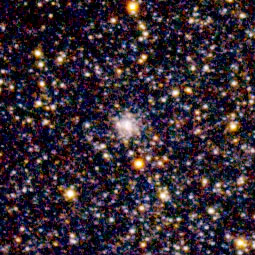Auriga
The constellation of Auriga is easy to find using the Plough as a signpost. From Megrez, the faintest of the Plough’s seven stars, draw a line through Dubhe, the top pointer and extend it until you get to a bright yellow star shining above the eastern horizon early on winter evenings. This is Capella, Auriga’s lead star (if you get to the Pleiades you have gone too far). Capella, 46 light years from Earth, is the most northerly first magnitude star and is circumpolar from our latitude. It is the sixth brightest star in the sky and in fact is a multiple system consisting of at least four members. Since the earliest times Auriga has been identified with a charioteer carrying a she-goat & her kids.M37, NGC 2099, Open Cluster
M37, NGC 2099, Open Cluster
Finally before leaving Auriga, take a look at the three fainter stars close to Auriga. These are known the “Kids”. Epsilon, the closest of the three to Capella is an extraordinary system. It has the longest known period of any eclipsing binary. The main star is an extremely luminous white supergiant. It is about 2,000 light years away and normally shines at magnitude 3.0. Every 27 years though, it gradually drops to magnitude 3.8 over a fourth month period, remaining at that magnitude for 14 months before returning to normal. The next event commences in 2009. The nature of the object causing the eclipses was a mystery to astronomers for a long time. It is now thought to be a close pair of stars surrounded by a huge disk of dust.
POWERPOINT SLIDE SHOW (218KB)